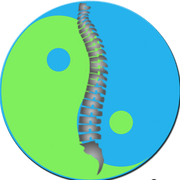Back to School Backpack Safety

Event Information
Backpacks come in all sizes, colors, fabrics, and shapes and help kids of all ages express their own personal sense of style. And when used properly, they're incredibly handy.
Many backpacks come with multiple compartments that help students stay organized while they tote their books and papers from home to school and back again. Compared with shoulder bags, messenger bags, or purses, backpacks are better because strong muscles, the back and the abdominal muscles, support the weight of the packs.
When worn correctly, the weight in a backpack is evenly distributed across the body, and shoulder and neck injuries are less common than if someone carried a briefcase or purse.
As practical as backpacks are, though, they can strain muscles and joints and may cause back pain if they're too heavy or are used incorrectly.
When you move your child's backpack after he or she drops it at the door, does it feel like it contains 40 pounds of rocks? Maybe you've noticed your child struggling to put it on, bending forward while carrying it, or complaining of tingling or numbness.
If you've been concerned about the effects that extra weight might have on your child's still-growing body, your instincts are correct. Backpacks that are too heavy can cause a lot of problems for kids, like back, neck and shoulder pain, as well as poor posture and headaches.
The problem has grabbed the attention of lawmakers in some states, who have pushed for legislation requiring school districts to lighten the load. While we wait for solutions like digital textbooks to become widespread, there are things you can do to help prevent injury.
Back pain is common among American adults, however it is not uncommon among children and teens either. In a new and disturbing trend, young children are suffering from back pain much earlier than previous generations, and the use of overweight backpacks is a contributing factor, according to the American Chiropractic Association (ACA).
This new back pain trend among youngsters isn't surprising when you consider the disproportionate amounts of weight they carry in their backpacks often slung over just one shoulder. Of those children carrying heavy backpacks to school, 60 percent had experienced back pain as a result.
Effects of an overweight backpack
Many things can lead to back pain, like playing sports or exercising a lot, poor posture while sitting, and long periods of inactivity. But some kids have backaches because they're lugging around their entire locker's worth of books, school supplies, and personal items all day long.
The American Chiropractic Association advises 5-10% of the child’s body weight in their packs. But many carry a lot more than that. Kids who wear their backpacks over just one shoulder as many do, because they think it looks better or just feels easier may end up leaning to one side to offset the extra weight. To compensate, the child might bend forward at the hips or arch the back. This can make the spine compress unnaturally, leading to shoulder, neck, and back pain. The extra weight can distort the natural curve of the middle and lower back, causing muscle strain.
Improper backpack use can also lead to bad posture. Girls and younger kids may be especially at risk for backpack-related injuries because they're smaller and may carry loads that are heavier in proportion to their body weight. Also, backpacks with tight, narrow straps that dig into the shoulders can interfere with circulation and nerves. These types of straps can lead to tingling, numbness, and weakness in the arms and hands.
Signs your backpack is too heavy
- It’s difficult to put on or take off.
- You have pain from wearing it.
- You feel tingling or numbness in your limbs.
- Strap marks show on your shoulders.
- Your posture changes while wearing it.
Stats on carrying an overweight backpack
- 2,000 backpack-related injuries each year, according to a national ER poll
- 55% carry loads greater than 10 percent of their body weight, according to a study of grade schoolers
- 85% had discomfort and pain due to backpack use, according to a study of college students
- 80% had less pain and body strain when they changed how they loaded and wore their backpacks, according to a study of middle schoolers
And bulky or heavy backpacks don't just cause back injuries. Other safety issues to consider:
- Kids who carry large packs often aren't aware of how much space the packs take up and can hit others with their packs when turning around or moving through tight spaces, such as the aisles of a school bus.
- Students can be injured if they trip over large packs or a pack falls on them.
- Carrying a heavy pack changes the way kids walk and puts them at risk of falling, particularly on stairs or other places where a backpack puts a student off balance.
Finding a Safe Backpack
Despite their potential problems, backpacks are great when used properly. Before you buy one, though, consider a backpack's construction.
When selecting a backpack, look for:
- An appropriate size: A backpack should not be wider than your child's torso or hang more than 4 inches below the waist
- Padded, adjustable shoulder straps to help distribute the weight on your child’s back without digging into their shoulders
- Padded back to protect against contents inside the backpack poking into your child’s back
- Waist and chest straps to help distribute the weight of the backpack more evenly across your child’s back
- Multiple compartments to help position the weight more effectively
- Compression straps to stabilize the contents
- Reflective material to allow your child to be seen when walking to and from school
Although packs on wheels (which look like small, overhead luggage bags) may be good options for students who have to lug around really heavy loads, they're very hard to pull up stairs and to roll through snow. Check with the school before buying a rolling pack; many don't allow them because they can be a tripping hazard in the hallways.
Tips on Packing and Carrying your Backpack
- Lighten the load, Use the bathroom scale to check that a pack isn’t over 10% to 15% of your child’s body weight (for example, the backpack of a child who weighs 80 pounds shouldn’t weigh more than 8 to 12 pounds).
- A textbook can weigh 2 or 3 pounds. Snacks and drinks add a couple more. Keep it to the essentials.
- Place heavier items closer to the back center and put lighter items out front. Secure items in compartments so they don’t shift.
- Lift with your legs, bending at the knees, and not with your back. Don’t lift and wiggle at the same time.
- Use both straps so your posture is even. Snug the straps to keep the backpack from slipping below your hip bone. The pack should rest evenly in the middle of the back and not sag down to the buttocks.
- If you must carry more than the safe weight, carry a book outside the backpack or use a wheeled book bag.
Teach your child to load the backpack with the heaviest items first closest to the bottom and the center of the back of the backpack and to make use of the multiple compartments to distribute the load.
A roomy backpack may seem like a good idea, but the more space there is to fill, the more likely your child will fill it. Help your child determine what is absolutely necessary to carry. If it's not essential, have them leave it at home, in their locker or in the classroom.
If you or your child experiences any pain or discomfort resulting from backpack use, please make an appointment with us as soon as possible and take advantage of our August Special. We here at Forest Park Chiropractic & Acupuncture are licensed and trained to diagnose and treat patients of all ages and will use a gentler type of treatment for children. In addition, we can also prescribe exercises designed to help children develop strong muscles, along with instruction in good nutrition, posture and sleeping habits.
Details
When
-
About the Business
Have a question? Ask the experts!
Send your question

